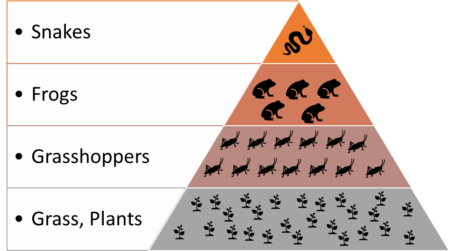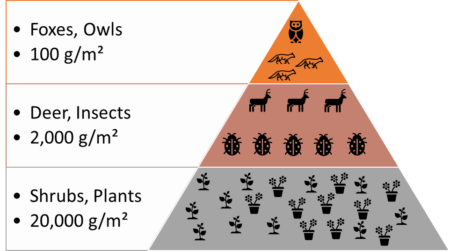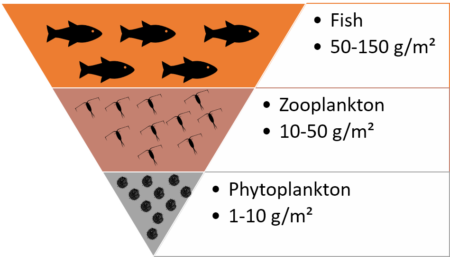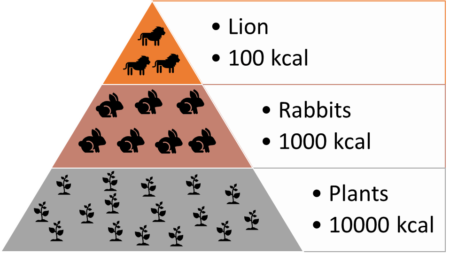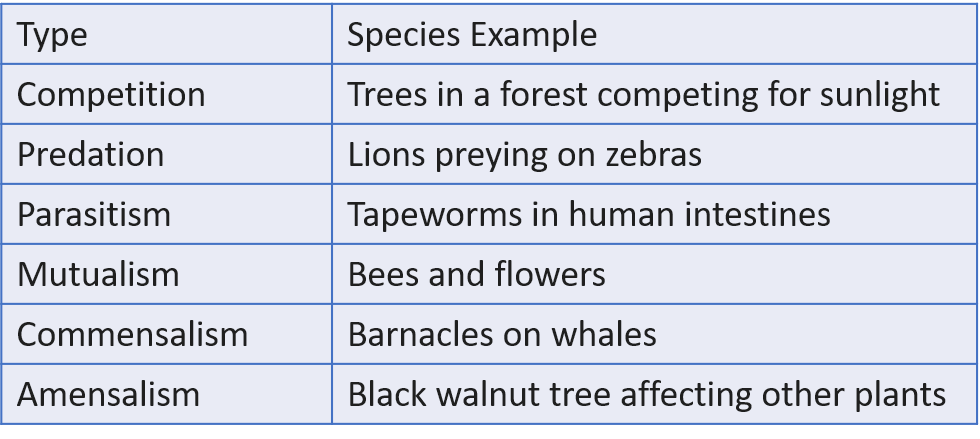Geological Time Scale : Precambrian, Paleozoic, Mesozoic, and Cenozoic Era for UPSC
Geological Time Scale : Precambrian, Paleozoic, Mesozoic, and Cenozoic Era for UPSC
Geological Time Scale
Geological Time Scale is a system of chronological measurement that relates stratigraphy (the study of rock layers) to time, used by geologists, paleontologists, and other Earth scientists to describe the timing and relationships between events that have occurred throughout Earth’s history. The scale is divided into four major eras: the Precambrian, Paleozoic, Mesozoic, and Cenozoic. Each era is further divided into periods, epochs, and ages, marking significant events in the history of life on Earth.
Key Concepts in Understanding the Geological Time Scale
- Eon: The largest division of geological time, encompassing several eras.
- Era: A major division of geological time, subdivided into periods.
- Period: A division of geological time into which eras are subdivided, containing a series of epochs.
- Epoch: A division of geological time smaller than a period and marked by significant changes in the Earth’s surface, climate, or life forms.
- Age: The smallest division of geological time, marked by well-defined and globally recognizable events.
The Geological Time Scale is a dynamic and continually refined system, with new discoveries and dating technologies contributing to our understanding of Earth’s history. It provides a framework for understanding the evolution of life and the development of the planet over billions of years.
Precambrian Time
Precambrian Time, encompassing about 88% of Earth’s history, is a vast expanse of time that stretches from the formation of the Earth about 4.6 billion years ago to the start of the Cambrian Period, approximately 541 million years ago. This immense period is divided into three eons: the Hadean, Archean, and Proterozoic. Each eon marks significant geological, atmospheric, and biological developments.
Hadean Eon
Duration: About 4.6 billion to 4 billion years ago.
Notable Events:
- Formation of the Earth through the accretion of solar nebula.
- Formation of the Moon, approximately 4.5 billion years ago, shortly after the formation of Earth.
- The Earth’s surface cooled enough to form a solid crust, though the environment was extremely volatile with frequent volcanic activity and a hot, inhospitable atmosphere.
Archean Eon
Duration: About 4 billion to 2.5 billion years ago.
Notable Events:
- Appearance of the first life forms, simple prokaryotic cells (archaebacteria and bacteria), around 3.5 billion years ago.
- Formation of the Earth’s first continents.
- The atmosphere was devoid of oxygen, composed primarily of nitrogen, carbon dioxide, and inert gases.
Proterozoic Eon
Duration: About 2.5 billion to 541 million years ago.
Notable Events:
- The Great Oxygenation Event (GOE), around 2.4 billion years ago, when oxygen began to accumulate in the atmosphere, produced by cyanobacteria through photosynthesis. This event led to significant changes in the Earth’s environment and the evolution of aerobic life forms.
- The formation of Rodinia, one of Earth’s earliest supercontinents, around 1.3 to 0.9 billion years ago.
- The appearance of the first eukaryotic cells (cells with a nucleus) approximately 1.6 to 2 billion years ago.
- Towards the end of the Proterozoic, around 800 to 635 million years ago, the Earth experienced the Cryogenian Period, characterized by severe ice ages that may have covered the entire planet in ice.
- The emergence of multicellular life forms towards the end of the Proterozoic, setting the stage for the explosion of life in the Cambrian Period.
Significance of Precambrian Time
Precambrian Time is crucial for understanding the early development of the Earth and the origins of life. The environmental and biological changes during this time laid the foundation for the evolution of complex life forms. The Precambrian saw the formation of the Earth’s initial atmosphere and oceans, the emergence of life, the development of photosynthesis leading to the oxygenation of the atmosphere, and the appearance of the first multicellular organisms. These events were pivotal in shaping the planet’s geological and biological history, leading to the diverse life forms and ecosystems we see today.
Paleozoic Era
Paleozoic Era, spanning from about 541 million to 252 million years ago, is a critical phase in Earth’s history characterized by dramatic geological, climatic, and biological changes. This era is divided into six periods: the Cambrian, Ordovician, Silurian, Devonian, Carboniferous (split into the Mississippian and Pennsylvanian periods in North America), and Permian. Each period witnessed significant evolutionary, environmental, and geological events that shaped the course of life on Earth.
Cambrian Period
Duration: About 541 to 485 million years ago.
Notable Events:
- The Cambrian Explosion, a rapid diversification of life, where most major animal phyla appeared within a short period.
- The development of hard-shelled organisms, leading to an increase in the fossil record’s richness.
Ordovician Period
Duration: About 485 to 444 million years ago.
Notable Events:
- The colonization of land by the ancestors of modern mosses and liverworts.
- A great diversification in marine life, including the rise of fish, corals, and mollusks.
- The end of the Ordovician was marked by a mass extinction event, significantly affecting marine communities.
Silurian Period
Duration: About 444 to 419 million years ago.
Notable Events:
- The first vascular plants (plants with a water transport system) appeared on land, leading to the development of more complex ecosystems.
- The evolution of the first jawed fish.
Devonian Period
Duration: About 419 to 359 million years ago.
Notable Events:
- Known as the “Age of Fishes” due to the vast diversity of fish species.
- The appearance of the first amphibians and the further colonization of land by plants, including the first trees.
- The Devonian period ended with a series of mass extinction events affecting both marine and terrestrial life.
Carboniferous Period
Duration: About 359 to 299 million years ago.
Notable Events:
- The formation of vast coal swamps as plants proliferated, leading to significant deposits of coal.
- The evolution of the first reptiles.
- A rich diversity of insects and the appearance of the first winged insects.
Permian Period
Duration: About 299 to 252 million years ago.
Notable Events:
- The supercontinent Pangea was fully assembled, leading to extreme climates and a dry interior.
- The diversification of the early ancestors of mammals, reptiles, and modern insects.
- The Permian period ended with the largest mass extinction event in Earth’s history, the Permian-Triassic extinction event, which wiped out approximately 90% of all species.
Significance of the Paleozoic Era
The Paleozoic Era is marked by the first significant adaptive radiation of life on Earth, leading to the establishment of modern ecosystems. The era saw the first vertebrates, the rise of fish, the colonization of land by plants and animals, and the development of terrestrial ecosystems. The end of the Paleozoic, marked by the Permian-Triassic extinction event, set the stage for the Mesozoic Era, the age of dinosaurs. The geological and biological developments during the Paleozoic Era laid the foundational structures for the diversity of life that would follow.
The Mesozoic Era: The Age of Reptiles
The Mesozoic Era, often referred to as the “Age of Reptiles,” spans from about 252 million to 66 million years ago. This era is crucial in Earth’s history, marked by the dominance of dinosaurs, the appearance of the first mammals and birds, and significant geological changes. The Mesozoic is divided into three periods: the Triassic, Jurassic, and Cretaceous.
Triassic Period
Duration: About 252 to 201 million years ago.
Notable Events:
- The recovery from the Permian-Triassic extinction event, the most significant mass extinction in Earth’s history.
- The first dinosaurs and mammals appeared during the late Triassic.
- The supercontinent Pangaea began to rift apart, leading to the formation of the Atlantic Ocean and the initial separation of what would become North America and Africa.
- The period ended with a mass extinction event, which paved the way for the dominance of dinosaurs in the Jurassic.
Jurassic Period
Duration: About 201 to 145 million years ago.
Notable Events:
- The rapid diversification and dominance of dinosaurs across the planet.
- The first birds appeared, evolving from theropod dinosaurs.
- The breakup of Pangaea continued, leading to the further separation of continents and the formation of shallow seas, which contributed to a rich diversity of marine life.
- The appearance of the first true mammals, although they were small and likely nocturnal to avoid dinosaur predators.
Cretaceous Period
Duration: About 145 to 66 million years ago.
Notable Events:
- Flowering plants (angiosperms) emerged and diversified, significantly altering landscapes and providing new ecological niches for insects, birds, and other animals.
- The further breakup of Pangaea into the continents we begin to recognize today.
- Dinosaurs reached their peak in diversity and geographical distribution.
- The period saw the evolution of many modern groups of mammals, birds, and fish.
- The Cretaceous ended with one of the most famous mass extinction events, likely caused by a combination of volcanic activity and the impact of a large asteroid or comet in what is now the Yucatán Peninsula. This event led to the extinction of the dinosaurs (except for their descendants, the birds) and paved the way for mammals to become the dominant terrestrial animals.
Significance of the Mesozoic Era
The Mesozoic Era is a pivotal period in Earth’s history, characterized by significant evolutionary, geological, and climatic changes. The dominance of dinosaurs for over 160 million years showcases the era’s evolutionary success, while the emergence of flowering plants revolutionized ecosystems and food chains. The end of the Mesozoic, marked by the Cretaceous-Paleogene (K-Pg) extinction event, closed the chapter on the age of reptiles, setting the stage for the Cenozoic Era, the age of mammals. The Mesozoic Era’s fossil record provides critical insights into evolution, adaptation, and the impact of mass extinction events on biodiversity.
The Cenozoic Era: The Age of Mammals
The Cenozoic Era, known as the “Age of Mammals,” marks the period following the mass extinction event that ended the Mesozoic Era around 66 million years ago. It spans from the end of the Cretaceous Period to the present day and is characterized by the rise of mammals to dominance on land, significant climatic changes, and the development of modern ecosystems. The Cenozoic is divided into three periods: the Paleogene, Neogene, and Quaternary, which are further subdivided into epochs.
Paleogene Period
Duration: About 66 to 23 million years ago.
Epochs: Paleocene, Eocene, Oligocene.
Notable Events:
- Paleocene Epoch (66 to 56 million years ago): Mammals began to diversify and fill niches left vacant by the dinosaurs. The Earth’s climate was warm and humid.
- Eocene Epoch (56 to 33.9 million years ago): Marked by the appearance of many modern mammal families and the first grasses. The climate was at its warmest at the beginning of the Eocene, followed by a cooling trend.
- Oligocene Epoch (33.9 to 23 million years ago): Further cooling and drying of the climate. Significant development of grasslands, which led to the evolution of large grazing mammals.
Neogene Period
Duration: About 23 million years ago to 2.6 million years ago.
Epochs: Miocene, Pliocene.
Notable Events:
- Miocene Epoch (23 to 5.3 million years ago): The continued expansion of grasslands and the evolution of many modern species of mammals and birds. The formation of the Himalayas, which significantly impacted Earth’s climate and atmospheric circulation patterns.
- Pliocene Epoch (5.3 to 2.6 million years ago): The climate began to cool significantly, leading to the Ice Ages. The ancestors of humans, the Australopithecines, appeared in Africa.
Quaternary Period
Duration: About 2.6 million years ago to the present.
Epochs: Pleistocene, Holocene.
Notable Events:
- Pleistocene Epoch (2.6 million years ago to 11,700 years ago): Characterized by the Ice Ages, with massive glaciers covering large parts of the Northern Hemisphere. This period saw the evolution and spread of Homo sapiens and the extinction of many large mammals (megafauna).
- Holocene Epoch (11,700 years ago to present): The current epoch, which has seen the rise of human civilization and significant impacts on the Earth’s ecosystems and climate. The Holocene is marked by a relatively stable climate, which has allowed for the development of agriculture, cities, and the complex societies we see today.
Significance of the Cenozoic Era
The Cenozoic Era is crucial for understanding the development of the modern world, from the evolution of familiar animal and plant life to the significant climatic shifts that have shaped the planet’s surface and ecosystems. This era has witnessed the rise of humans and their profound impact on the Earth, making it a period of great interest not only to geologists and paleontologists but also to anthropologists, ecologists, and climate scientists. The ongoing changes and challenges of the current epoch, the Holocene, particularly concerning human-induced climate change, biodiversity loss, and habitat destruction, underscore the importance of studying the Cenozoic Era to inform our conservation and management efforts for a sustainable future.
Geological Time Scale : Precambrian, Paleozoic, Mesozoic, and Cenozoic Era for UPSC Read More »

